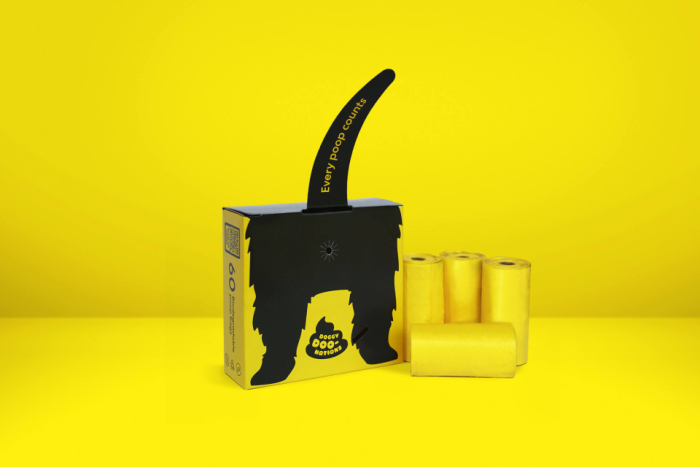“Brand and performance aren’t opposites – they’re teammates. When they work together, you get compound growth.”
When brand and performance work together, they can fuel steady, sustainable growth. This is backed by research suggesting brands investing between 10% and 20% of their revenue back into marketing consistently create better growth, margins, and market share returns.
Higher marketing investment generally correlates with higher returns. Strong brands can charge more – and customers are less price-sensitive.
In our previous article, the creative minds at agency YoungShand (YS) reiterated that marketing should never be dull, but “unashamedly bold” instead. In this article, our focus is on brand performance.
Duncan Shand, the managing director of YS, explains that far too much of what is seen in the advertising space is promotionally based. For some reason in this country we place too much emphasis on sales and promotions, he says. Shand adds that there is research clearly showing how a balance of brand and promotional spend will deliver the best result, while acknowledging it can be a scary thing to move from a 100% reliance on promotion to a split.
“Getting that balance of brand and performance and getting that right is really important,” Shand says. “A product’s marketing always needs to be interesting, original, and it must connect with you as a consumer. It should also be relevant to the brand.
“This will drive a lot of higher-level performance.”
What Shand and his colleagues Corey Chalmers and Sue Kipling are trying to convey is that many marketers benchmark against competitors instead of recognising that the real competition for attention is Netflix, TikTok, YouTube and everything else in people’s lives.
“The bar is very high, and I get a bit iffy about the language of saying you have to take a risk because this is the most risk-averse time I’ve ever experienced in marketing,” Chalmers says. “It would be nice to rebrand it as not a risk but an inevitable conclusion. I mean, what’s there to lose – you might be noticed? And that’s something we need to educate our clients competently, and ourselves, on, to be comfortable with that discomfort.”
Chalmers says being polarising is not necessarily a bad thing, as long as it’s relevant. In his opinion, some brands try too hard.
“Just be truthful to what you are,” he advises.
YS says its work on their Lightforce Solar campaign exemplifies this. The agency’s challenge was to position Lightforce as the go-to solar provider in New Zealand – a task it took on just over a year ago.
Shand explains that they were initially brought on as a media partner to drive a better media result, and in doing so, managed to improve year-on-year sales by around 15%. But YS didn't want to settle there. They introduced a campaign that encapsulates brand and performance: The Future Is Obvious. They realised the brand needed fame fast, and in doing so, All Black brothers Beauden, Scott and Jordie Barrett became the brand ambassadors – and even their dad, Kevin, too.
“We pointed out the obvious benefits with three less-than-obvious brand ambassadors. The campaign points out that the solution to high power prices, power resilience and renewable energy has been right above us all along – the sun.”
From a media point of view, the launch strategy was to maximise the visibility of Beauden first, and leverage his star power. Placements have been prioritised across high-visibility outdoor sites, video, radio, and social media. YS describes the campaign as simple, logical and very Kiwi.
“Since its launch, sales have gone up by up to 150%,” Shand says. “That’s been a great performer. And that’s without spending any more on media. Demonstrating the effectiveness of getting the brand and performance mix right.”
Meanwhile, Kipling explains that brand awareness is important because you can’t buy something if you’re not aware of it. She says you’ve got to make people aware of a product for them to even consider it.
However, Shand warns that some businesses never build a brand because they get hooked on promotion, believing daily deals alone drive revenue. He says such companies tend to believe that sales and their revenue are directly linked to putting deals out in the market daily.
“It can be very scary to move away from so much promotion and invest in a brand. But it’s important to remember that only 5% to 10% of the market are considering buying a new car, or toaster, or bra,” Shand says. “So in those promotions, if you’re not in the market, you just switch off.”
In contrast, a well-done brand ad that’s engaging, humorous, and interesting will grab attention, building associations that will help sales in the future.
“Businesses get hooked on a drug of promotion, and they fear that if they turn it off, then the world is going to fall. And the simple reality is the world won't fall. You're just switching to another way of communicating, and it'll be more effective at driving sales.
“It's like having a baby. You don't truly understand what it's like to become a parent until you've experienced it, until you've had a child. Kind of the same sort of thing. You've got to do it first,” Shand says.
This was the challenge YS was tasked with tackling for Blind Low Vision NZ (BLVNZ), an organisation struggling to stand out in a crowded sector. There are over 28,000 charitable organisations in New Zealand, and BLVNZ needed to stand out.
The solution? Rely less on traditional charity advertising and instead create a product and revenue source. To raise funds for guide dogs, YS created Doggy Doonations: specially designed boxes of dog poop bags that answered a need, attracted donations and attention - and made people smile.
And in a different category altogether, Bendon’s bold ‘Bra Better’ campaign – covered in our previous article – showed how unashamedly bold work can build brand fame and drive internal transformation.
In the end, YS says it comes down to combining bold creative with a strong performance approach that builds brands and drives growth.
“Strong brands don’t just drive awareness – they drive margin,” says Shand.
To learn more about YoungShand's approach to building bold brands, visit youngshand.com





